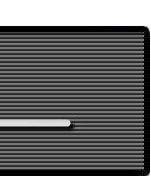|
Mentally Calculating the Wind Correction Angle (cont.)
II - Method for estimating the wind correction angle (WCA)
Step 1: Most aircraft have a typical cruising speed. Determine what is the most common true airspeed that you fly at.
Step 2: Determine your maximum wind correction angle (WCAmax), for a wind speed (WS) of 10 knots, using the formula below at the true airspeed (TAS) that you just obtained above (step 1). This will be the WCA when the wind direction (WD) is 90o in relation to the CRS line. The exact maximum wind correction angle is given by:
where WS is the wind speed, and TAS is the aircraft's true airspeed. Make sure your calculator is in DEG (degrees) mode. In this example the WS is 10 knots and the TAS is 110 knots. Therefore we will have:
which means that in the worst case scenario when the wind is 90o in relation to our desired course (same as AWA=90o), the wind correction angle (WCA) is 5o for a wind of 10 knots at our true airspeed of 110 knots. You should memorize this result of 5o for your WCAmax.
Step 3: Remember a few simple rules:
- If the wind speed doubles, triples, etc., your wind correction angle (WCA) will be approximately double, triple, etc. respectively. This works for wind speeds up to 50% of true airspeed (TAS).
- If the wind speed decreases in half, a third, etc., your correction angle (WCA) will be approximately half, one third, etc. respectively.
- If your aircraft's true airspeed (TAS) doubles, triples, etc. the wind correction will be approximately half, one third, etc. respectively of what it was.
- if your aircraft's true airspeed (TAS) is halved, is one third, etc., the wind correction will be approximately double, triple, etc. respectively of what it was.
The reason we used 10 knots for wind speed (WS) when we calculated WCAmax is that it is an easy number to work with later when we have other wind speeds. For example if the wind speed is 20 knots we know easily that 20 knots is two times more than 10 knots, therefore the wind correction angle will be double.
Step 4: The correction factor is based on the acute wind angle (AWA). This is one of the two angles, whichever one is 90o or less, formed by the wind direction and the CRS line. Memorize the correction factors for the WCA when the wind is from directions other than 90o in relation to our course (AWA not equal to 90o). The following table lists these correction factors. Remember that you are just getting a really rough number so that you can estimate your initial WCA (crab angle) when intercepting or tracking a course.
| |
| AWA |
Correction Factor
(CFAWA) |
| 0o |
0 |
| 15o |
1/4 or 0.25 |
| 20o |
1/3 or 0.33 |
| 30o |
1/2 or 0.5 |
| 40o |
2/3 or 0.67 |
| 50o |
3/4 or 0.75 |
| 60o |
1 |
| 90o |
1 |
| or |
| AWA |
Correction Factor
(CFAWA) |
| 0o |
0 |
| 30o |
1/2 or 0.5 |
| 50o |
3/4 or 0.75 |
| 60o |
1 |
| 90o |
1 |
|
|
| |
(a) | |
(b) |
|
Fig 2 Correction factors for maximum wind correction angle
There are two tables above, the first one (left) is more complete and more precise. We will use the less precise table on the right for our examples. You will see that even with this more simplified table we will get a pretty good estimate.
To figure out your wind correction angle (WCA) just multiply the maximum wind correction angle by the appropriate factor. If wind speed is the same** as the one used to calculate WCAmax***, we have:
| ** |
Later in the text we will also discuss how to adjust when the wind speed is other than the 10 knots we used for our WCAmax. We will be applying the rules in step 3. I'll also show you how to visualize the AWA using your aircraft instruments.
|
| *** |
Note: the dot (.) in the formula above means multiply. |
In the table, use the AWA that is closest to the value that you have. For example: for an AWA of 33o use the 30o correction factor which is 1/2 or 0.5 (see figure 2b). If you calculated WCAmax to be 5o, your WCA will be 5o x 0.5 or 5/2 = 2.5o. Round that to the nearest degree and get 3o for your estimated correction angle.
You can compare your estimated wind correction angle (WCA) with the formula below (this formula is exact) to determine how far you are off. Remember that your goal using the technique above is just to get a rough idea of what the wind correction angle is, it does not have to be exact.
|

